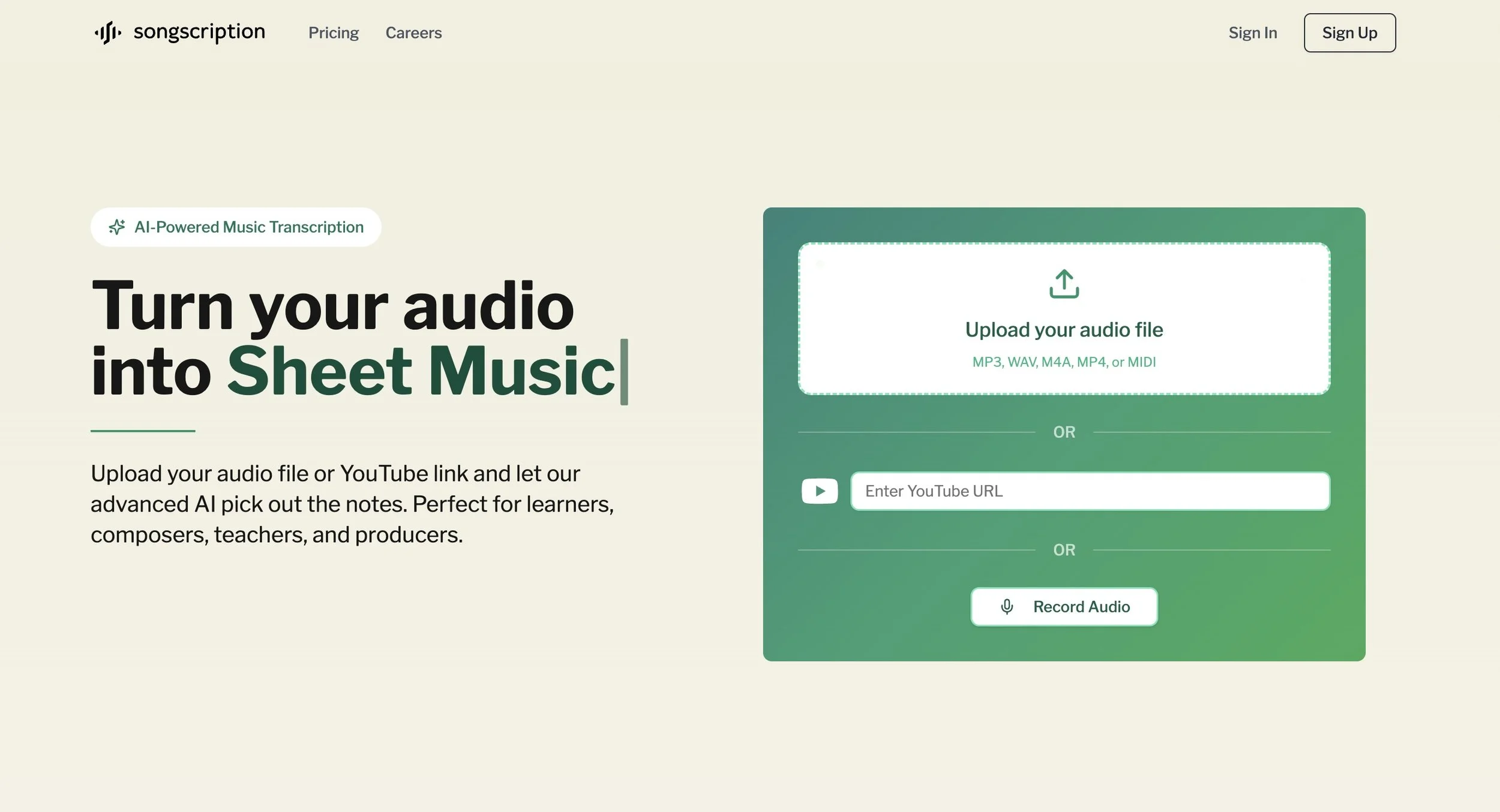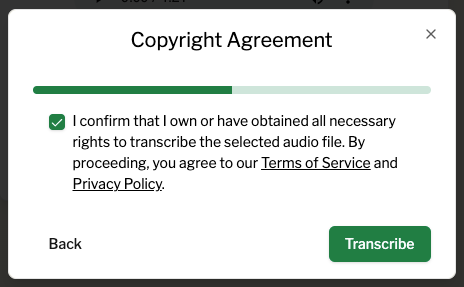Audio > Sheet Music: Meet Songscription
As someone who has spent my entire career at the intersection of music education and technology, I’m always intrigued, and often skeptical, when a new AI-powered tool promises to “revolutionize” the way we teach, learn, and create music. For many years now, the “Holy Grail” of music software is one that can convert an audio recording to sheet music. I’ve seen MANY come and go - and they usually go because publishers file lawsuits to stop those technologies the moment they are launched. Even so, two AI-powered solutions have come along recently: Klang.io and now Songscription. Songscription is one of the latest entrants in the rapidly expanding world of AI-generated notation, and while it certainly reflects the exciting direction our field is heading, it also illustrates just how much refinement is still needed before these tools can truly support the everyday realities of K–12 music educators.
According to its website, Songscription allows users to upload an audio file (MP3, WAV, M4A, MP4) or paste a YouTube link, then converts that into sheet music, MIDI, guitar tabs, or a piano-roll view. The service currently supports “single-instrument transcription” for piano, guitar, bass, trumpet, violin and flute (with more promised). They highlight that this could be especially useful for learners, composers, teachers and producers. Also noteworthy: the company recently raised funding and states an ambition to serve high school band and orchestra settings.
So in theory, this might allow a teacher to turn a student’s recording (or a YouTube performance) into a notation file or piano-roll view, potentially saving transcription time. From a pedagogical viewpoint, that is pretty cool.
Turning next to Klangio: Here we have a more mature product, with broader instrument support, multi-instrument transcription (polyphonic, rhythm detection), and an integrated edit-mode to fine-tune results in the browser. Klangio makes explicit claims of being able to handle multiple instruments and full arrangements—not just single-instrument files. At the same time, user feedback is more tempered: some users praise the speed and convenience, others caution that accuracy is far from flawless. In comparison, Songscription appears a bit narrower in scope (single-instrument for now) and younger in market presence. That means less maturity in the workflow, fewer teacher-specific features, and likely more “kinks” still to be worked out.
Here are a few ways you as a teacher might use Songscription with your students:
Student composition check-in – Ask students to record a short original melody or small ensemble clip, upload to Songscription, and then view the sheet music/piano-roll. This can spark discussion: Did the AI pick up everything? Where did it miss rhythm changes, articulations or expressive nuance? That reflection can deepen listening and notation skills.
Transcription starter-version – For students who want to arrange or transcribe a popular song (within copyright/educational use guidelines), Songscription could provide a rough draft of notation. The teacher can then guide students in “proofreading” the output: adjusting note durations, verifying key/tempo, aligning articulations, etc. This shifts the focus from “let the machine do it” to “critique the machine’s work” — which is pedagogically significant.
Differentiated notation support – For younger or less experienced ensemble members who struggle to notate by ear, the “interactive piano-roll” or tabs in Songscription may serve as scaffolding. They can see visually what the pitches are, then convert that into standard notation. This can build bridge skills for students who are still developing aural transcription proficiency.
But the caveats: As with all emerging AI tools, some limitations should limit your expectations:
Accuracy is not guaranteed: While the website showcases example transcriptions (e.g., Bach Invention No. 4), those are likely ideal cases. Real-world ensemble audio, noisy recordings, mixed instrumentation, expressive timing—it’s likely to produce errors. Indeed, users of similar tools like Klangio caution about mis-assigned notes, wrong string/fret choices for guitar, incorrect key or rhythm assignments. So for Songscription: anticipate that output will be “good but not perfect,” and plan class time to review and correct.
Single-instrument limitation (for now): As mentioned, Songscription currently supports only one instrument at a time. For full band scoring (woodwinds + brass + percussion), this means you’ll either need to extract single-instrument parts or wait for future updates. The company says ‘more instruments coming soon’.
Pedagogical wrap-around still needed: While the tool could save time, it won’t replace the teacher’s judgment. The notation may miss marks of edition (articulation, phrasing, dynamic contrast) that are essential for performance readiness in a performance ensemble context.
Legal/ethical questions: The company itself acknowledges the “gray area” around using copyrighted music via YouTube links and audio recordings. They even make you click a box that states that you have the right to make the transcription (you almost never do). As a music teacher, you’ll want to ensure you’ve cleared performance rights, or use it in an educational “not for performance” context only.
For the curious and tech-savvy music teacher, Songscription offers a promising new tool: it could speed up compiling student-friendly notation, engage students in critiquing AI-generated notation, and provide scaffolding for younger learners. That said, because the tool is younger, narrower in scope than some competitors, and still needs teacher supervision to be fully effective, I wouldn’t yet rely on it as a flawless “auto-notate everything” solution. I tried a few different monophonic recordings and it did a decent job - but nothing amazing. They stilll have a LOT of work to do, in my opinion, to make this a reliable audio transcription tool - but I’m pretty sure they will get there soon.
Let me know what you think! Songscription is free to try out.

